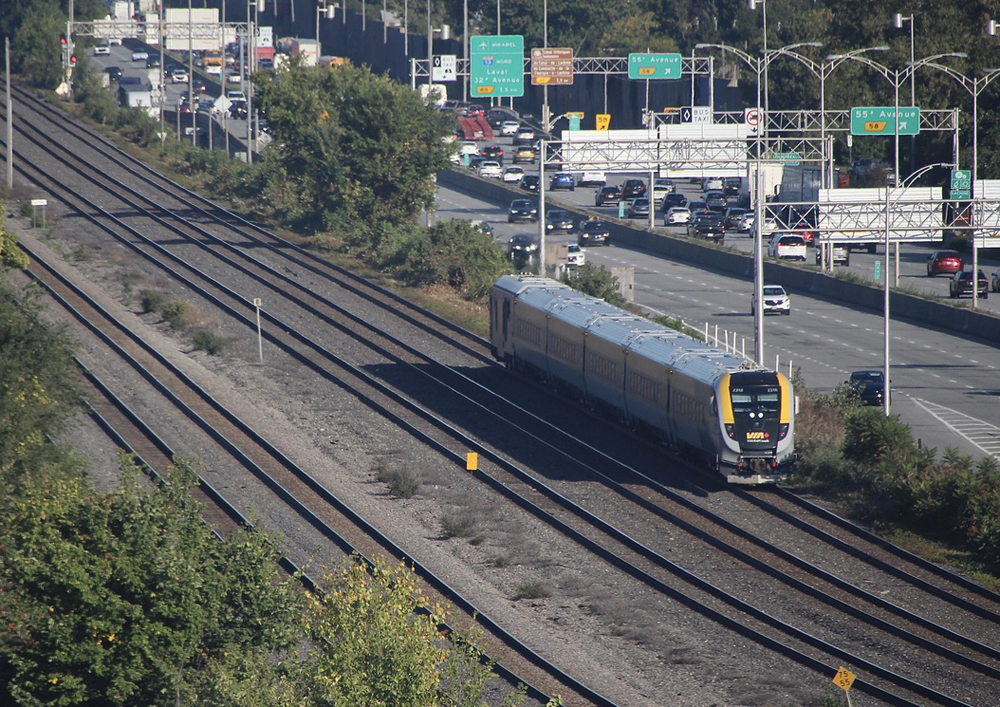
MONTREAL — Apparently triggered by one or more incidents in which a VIA Rail Canada Venture trainset failed to activate highway crossing warning devices, Canadian National is now requiring that all of VIA’s Venture-equipped trainsets operate with 32 axles.
The edict came late Friday, at the beginning of Canada’s Thanksgiving Day holiday weekend. It also follows more than two years of extensive testing and more than a year of revenue service in which VIA’s newly arriving Siemens fleet operated on every segment of the Quebec City-Windsor, Ont., corridor.
Until now, VIA has standardized each Siemens-built trainsets with one cab car coach, three “economy” coaches and one business-class car. Four axles per car on the five coaches and four on the Charger locomotive add to 24 axles on the semi-permanently coupled trainset. As a result, VIA has scrambled to add equipment to already well-booked trains.
Sources tell Trains News Wire that there were a minimal number of disruptions on Saturday and Sunday; other sources were unable to confirm a report HEP-2 heritage coaches were to be used on some trains as axle-count cars.
This is highly problematic for VIA from an operational standpoint, because the Venture deployment plan calls for push-pull operation. Many of the trainsets handle a daily Quebec City-Montreal-Ottawa train, then soon reverse on the same route. The new equipment has efficiently operated these round trips almost exclusively through the summer. However, they have been slow to migrate to departures to and from Toronto for Ottawa, Windsor, Sarnia, and Montreal until a new servicing facility is completed there.
CN discovery of shunt issues
A VIA “system notice” released Friday to employees says the axle-count requirement was implemented because Canadian National discovere, “a potential risk of short warning times on crossings equipped with Grade Crossing Predictors (GCPs). Such crossings utilize technology to estimate train’s speed to determine a sufficient warning time for vehicular or pedestrian traffic.”
It adds, ‘We can’t just add more Venture cars. Due to existing reservations and planning constraints, we are limited in our ability to extend trains on short notice. That said, we are doing all we can to minimize impact through all available means.”
The VIA-issued notice obtained by News Wire makes no mention of possibly waiving the axle-count requirement if speeds were limited. In the U.S., Canadian National has offered that trade-off to Amtrak in place of a requirement to run Superliners on a portion of Amtrak’s Illinois-financed Chicago-Carbondale, Ill., route.
It does mention that “shunt enhancer” antennas are being considered. This measure involving a locomotive-mounted device was being tested by CN in September 2023, as observed by News Wire [see “Seeking answers on ‘loss of shunt’…,” Sept. 6, 2023]. Installation in the U.S. would require a waiver currently being evaluated by the Federal Railroad Administration [see “Rail labor opposes Amtrak request…,” News Wire, July 6, 2024].
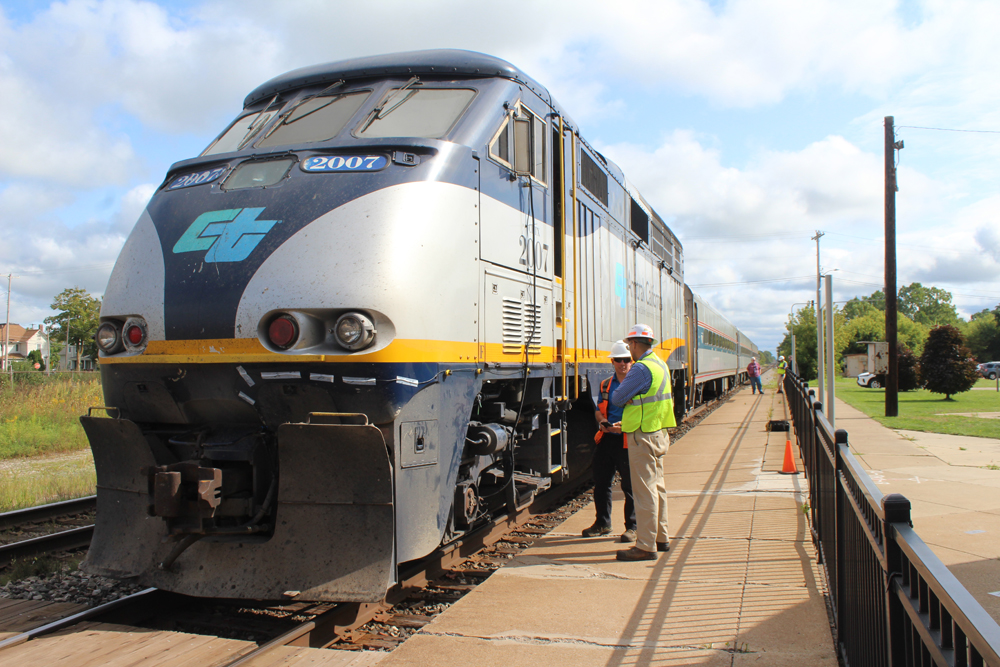
“Loss-of-shunt” instances arise sporadically on routes throughout the U.S. A specific incident or series of incidents often lead to the imposition of an axle-count or speed-limit requirement. The theory is that these increase the probability that either a greater number of wheels or more time for a train in a track circuit will ensure electric current conductivity between the rails.
VIA’s bulletin does not say what triggered the requirement on the Venture trainsets. Once such an incident occurs, regulators and operators have expressed understandable hesitancy to remove restrictions and declare, “it is now safe,” until a reason the fault occurred is explained. News Wire will continue to seek answers to those questions.
— Updated at 5:10 p.m. to note that a report of use of heritage equipment as axle-count cars could not be confirmed.






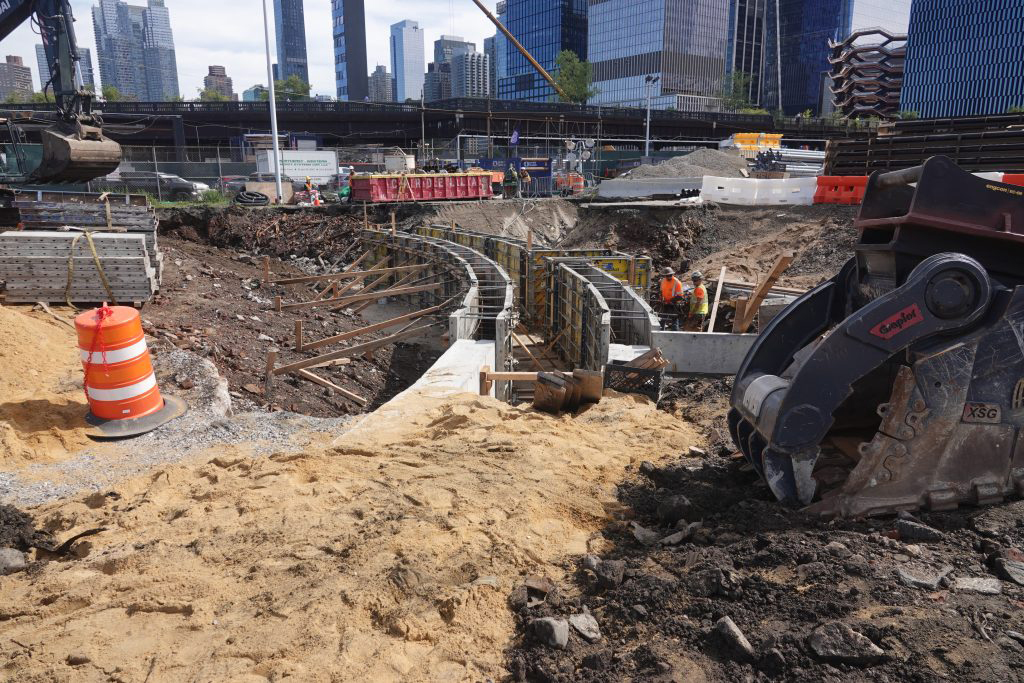

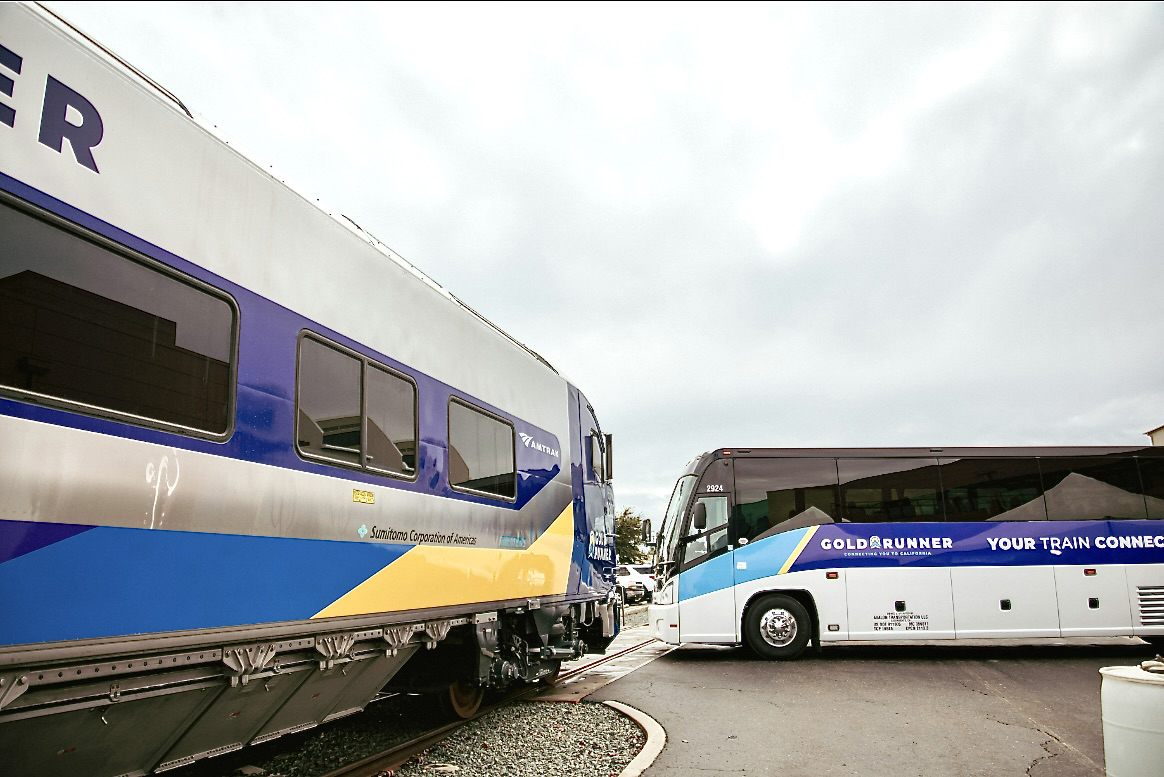
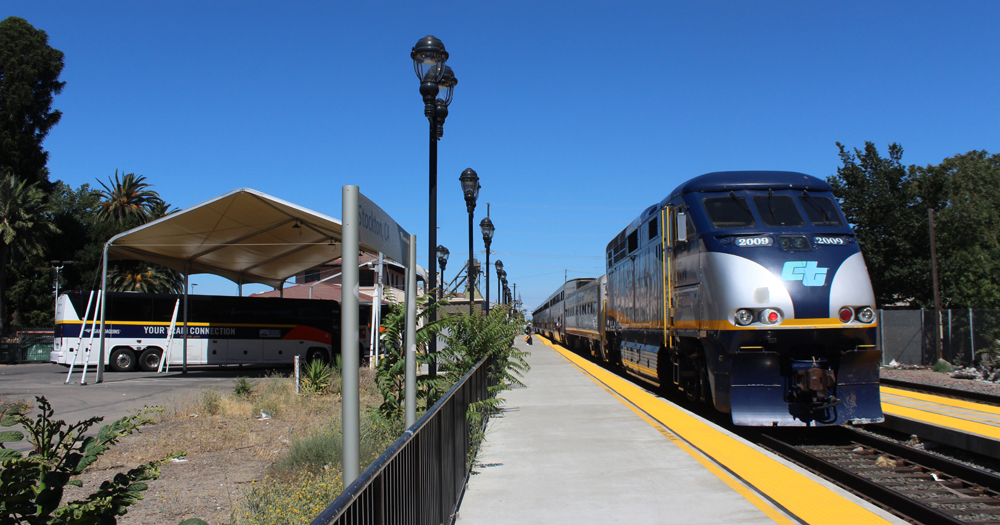




Does it only affect Siemens train sets? VIA runs many short trains using HEP 2 or LRC equipment. They should have similar problems, don´t they?
I should add to my above comment that ‘quartering’ track relays with a higher voltage can lead to false activations of the grade crossing protection in wet weather, depending on the mineral content and electrical conductance of the track ballast.
The obvious answer is to order two more coaches for each trainset. For 32 sets that’s 64 more coaches. That should be around $160 million (US). Who pays? But for CN’s signal problems this would not be an issue. And as this is Canada where corporate rights are not set in stone like the US. It’s very simple: fix your signals or buy 64 coaches.
New doesn’t mean better.
With all the new wizbang tech we have today, everything SHOULD work better. But NO. Can’t get the signals to operate properly. Siemens Charger locomotives are crap and 30+ year old GE P42’s that have many millions of miles on them work better.. and other manufacturers produce wheel sets for transit cars that form cracks after only a few thousand miles.
Maybe we should stop using CAD programs on computers and go back to using the old slide rule. Ooops, unless you are in your 60’s you probably don’t know how to use one.
Seems like this is a becoming a serious safety issue for the public. Without knowing what factors or technical glitches are causing the problem, don’t this cause uncertainty for all crossings?
How does CN move light engines over these tracks? Do the always pull a string of empty boxes?
I hope that someone with specific knowledge of CN rules will comment, but I will verify that CSX rules limit the speed of single light units to 30 MPH and crews must remain vigilant to loss of shunting.
New York Central Budd RDCs were equipped with a device called “Rolokron”. I probably missed spelled that, but device created excitation that activated signals.
The Budd Rolokron was an anti-wheelslip device to keep the car from skidding while braking.
Single RDC’s are too light to reliably shunt signals. The solution was “excitation gear” which allowed the single car to shunt signals. On Reading Co. 2 of 16 cars (9151-9152) had excitation gear.
RDG policy was that, if a nonequipped car were running solo, the engineer approached all crossings prepared to stop and the DS had to set a manual block behind it.
A subsequent owner ran car 9164 (no gear) solo. It failed to activate a crossing signal, hit a fuel truck and the engineer died in the fire.
Rolokron and Decelostat are antilock braking systems.
This problem is very puzzling. It seems unique to CN. However, have heard rumors that is t is occurring on other Amtrak routes?? Hopefully VIA can get with Amtrak to compare notes?
There are many different items that one or more may be a contributor?
1. Is CN using a lower voltage for the activation of crossings than other RRs?
2. Would shunt enhancers on locos work? FRA seems to be dragging its feet giving Amtrak that clearance waiver for installation on locos.
3. Is the wheel profile – rail profile different on CN than other RRs including Amtrak’s owned rail?
4. Is it possible with only disc brakes that no tread brakes is allowing some kind of buildup on the wheels?
5. Has Amtrak tried wheel scrubbers?
6. What suppliers of crossing signal detection circuits are involved?
7. Is there a compatibility issue of regular track occupancy and crossing activation circuits.
8. Is the far location of the detector capacitors different on CN?
9. Frequency of the detectors circuits diriment than ones that work on other RRs?
10 what are the total number of axels per day (pass / freight) of problem crossings VS no problem?
I knew it! CN is in cahoots with the suppliers! Amtrak and Via will have to buy two more coaches per set. Brilliant!
CN runs Amtrak or VIA passenger trains on ex-ICRR tracks and on ex-CNR/GTW tracks. Amazing that today’s CNR signal problems are common to lines of both heritages, but divergent from any other railroad on the planet..
Think people think think. Which railroads were the major users of RDCs. Simple enough question. The answer is: New Haven Railroad, B+M Corporation, CPR, and CNR. I never saw an RDC lashup with 32 axles. Half that number at the most. Four axles not uncommon.
Most VIA trains have run on CNR since VIA was founded. Now in 2024, almost all VIA trains run on CNR. What changed? Simple enough question. Answer: CNR’s corporate leadership.
Speed, Mr. Landey. Speed. Today’s Via sets just might be a touch faster than yesterday’s RDCs do you think? One of the problems is “short warning times” … they go to fast.
Forgive my tech ignorance, but this whole issue sounds like trying to adjust a carberator in the age of fuel injection. Did you watch SpaceX yesterday? And CN can’t figure out how to get the gates down correctly?
Another factor is the method train presence detection. Historically, track circuits were DC, and relays were placed at spacings close enough to ensure detection. Modern track circuits are AC with DC overlays for specific purposes, such as highway crossing protection activation. All of the modern systems are digital and very sensitive to variances in resistance.
I can understand why operations of yesteryear don’t translate to operations of today when it comes to track circuit anomalies. They’re entirely different systems.
PRSL ran extra-long RDC trains. I think most cars were deadheading from the Shore to the City or vice-versa to get more vacationers or day trippers (“Shoobies”).
Canadian National appears to be the only railway with ‘shunt issues’ at grade crossings. Amtrak and Via Rail Canada should seek legal counsel on the matter. As no other host railways have this issue, it stands to reason that this is a CN problem CN itself needs to rectify.
12-wheel heavyweight passenger cars are scarce nowadays. They would bring satisfaction to CN. This is bureaucratic harassment.
Run Indian Railway passenger trains, they go on forever! 😀
Grade crossing shunting can also be an issue on lesser used rail lines due to rusty rails. “Quartering” the two, 2 ohm track relay windings from 1 ohm parallel to 4 ohms series, and increasing the track voltage accordingly, can sometimes remedy the rusty rail situation. Predictor motion sensors are yet another similar matter.
Hmmm, CN shut problems. Same “stuff”, different day.
CN shut problems. Same “stuff”, different country.